“By reading we discover our world, our history, ourselves.” - Daniel J. Boorstin
Hello again dear readers and welcome back to the Gentleman’s Reserve. I am Vito from MiniWargaming.com and for today, I will be your guide as we take a look through history at how the tabletop games that we have come to enjoy with our family and friends came to be.
We must first define what exactly miniature wargaming is but that is no easy task for the definition would change and differ from one person to the next. I believe the term is very broad and all-encompassing. There are so many different genres that the term can be applied to such as fantasy, sci-fi, and historical to only name a few. However, they all shared a linked commonality, an activity that seeks to realistically, to a degree, simulate combat and warfare.
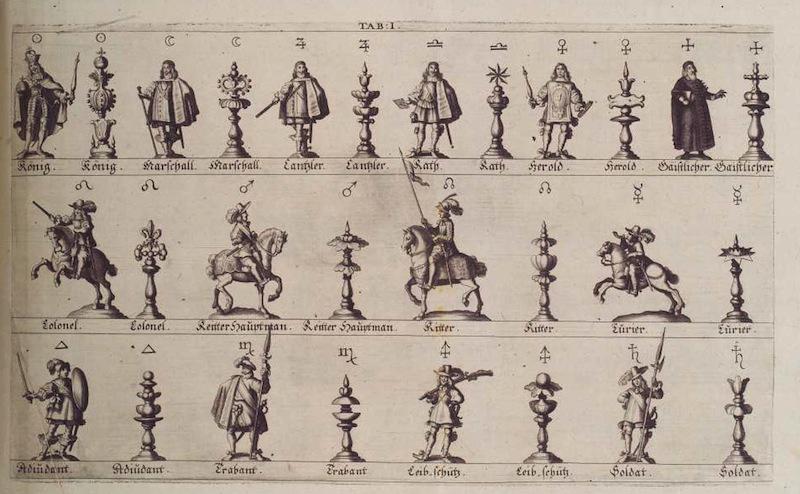
Some of the new pieces that were added to The Great King's Game
We as humans have sought to create that activity throughout history and have had long-lasting success as time passed. One such game that still exists to this day is chess. The most commonly held belief is that chess was invented in India some 1500 years ago in the 6th century AD.
Eventually it made its way to Europe where it was beloved by countless kings and nobles. While chess can have a great entertainment value and even help sharpen a strategic mind, it can only do so much. I highly doubt commanders would be using chess as a simulator for complex maneuvers or practicing the art of war.
One of the most interesting variants of chess came from Christoph Weichmann in 1664. Weichmann dubbed his new game ‘The Great King’s Game’ which saw the removal of the square grid system to chess with a more circular one. This allowed the pieces to move in almost any direction. Additionally, while in chess there are 16 playable pieces, Weichmann introduced 36 new pieces such as the Marshal, Herald and soldier.
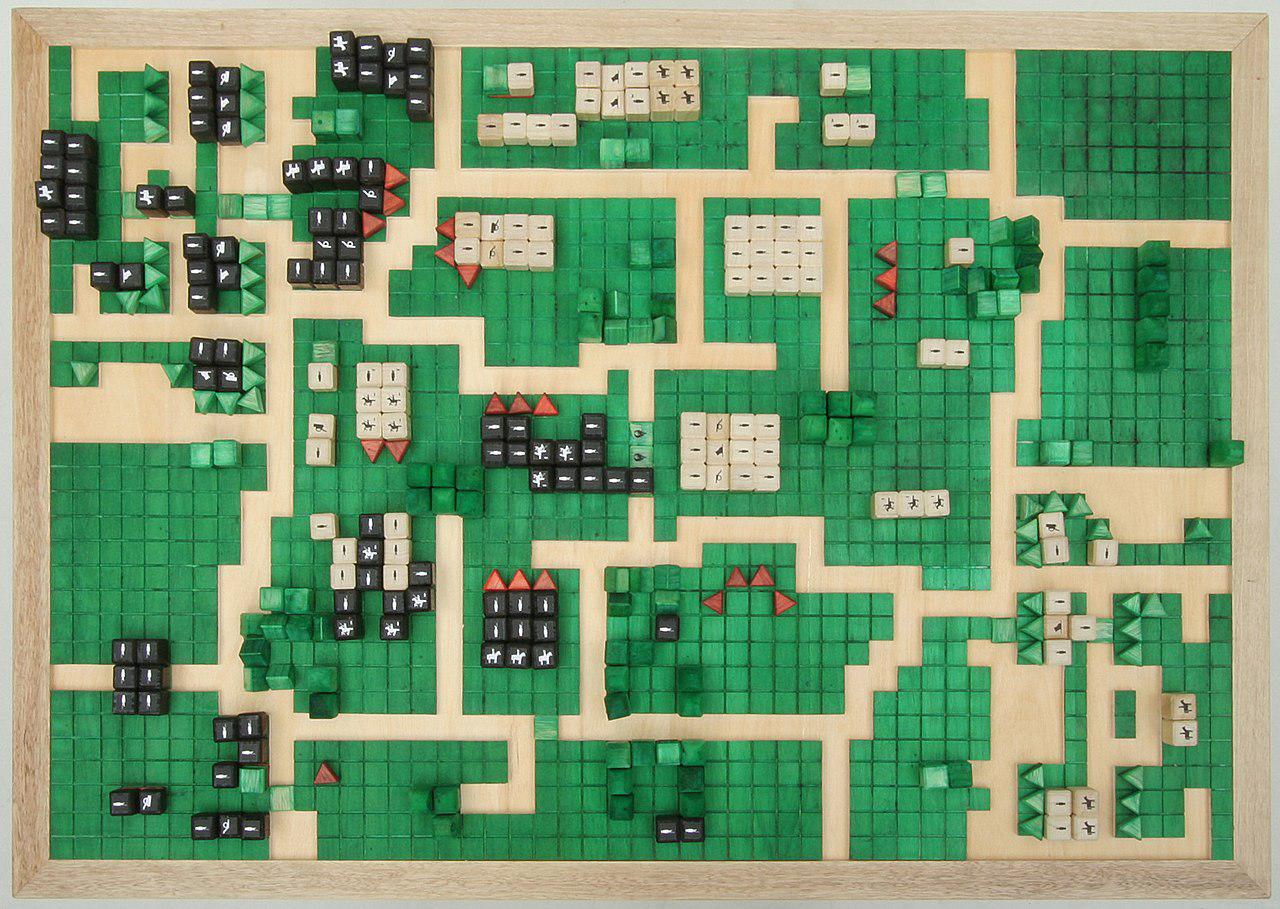
A reconstruction of Hellwig's game.
These innovations to an already captivating game would eventually break from the fundamentals of both systems in 1780. Johann Hellwig, a professor at the University of Brunswick and Helmstedt would be the first true pioneer in tabletop wargaming. In essence he was the grandfather of wargames.
He created a manuscript entitled Kriegsspiel, literally meaning War Game in German. His views and changes to tabletop wargames had drastically refashioned how people viewed troop’s movement and displacement, terrain such as hills, swamps and rivers, victory conditions such as holding ground instead of capturing the king, and rebranded the game for his era.
Instead of knights and rooks, there were military branches of his time such as artillery, infantry and cavalry. In 1803 his second edition of the game was released that had more interesting pieces which included custom miniatures and new aspects of the game such as combat resolution; by how much did one outnumber their opponent and unit direction such as flanking.
As imitations of the game were created throughout the years, other aspects were added such as distances for each unit and the range of their weapons. No longer was it an abstract game such as chess but slowly evolved into a true wargame simulator.
There are often key moments and characters in history that can be added to a timeline that was so pivotal that it changed the course of history. For tabletop wargaming that key moment came in 1810 when Georg Von Reisswitz continued the work of Johann Hellwig.
Unable to afford the expensive version of Hellwig’s game, as once again, the original game was meant for kings and generals, he and his friends crafted their own version using whatever materials they had. Sounds similar to what we current wargamers already do, no?
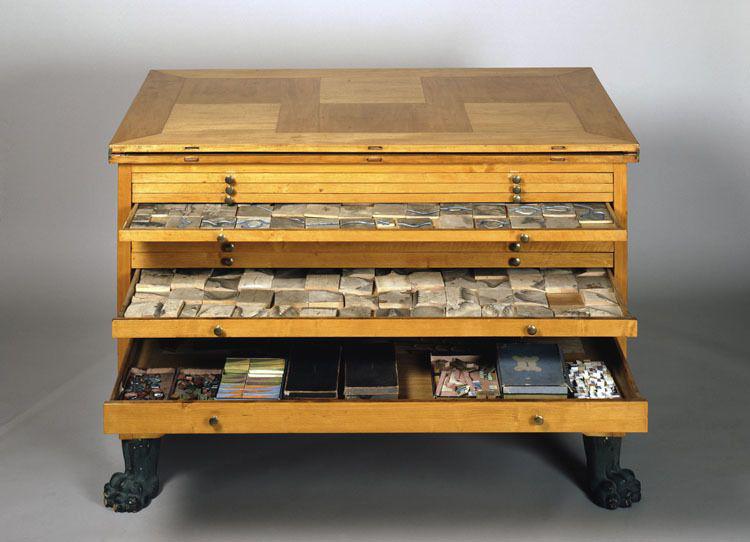
An example of what Reisswitz presented to the King.
Speaking of making things from scratch you can check out the MiniWargaming Vault to how to make homemade terrain. Click Here To Watch How To Make Sand Bags
As his playtesting continued he realized that the grid style system was limited in application. He abandoned the idea for a more open style area of play which allowed him to simulate real-world conditions. He began crafting his own terrain such as hills and rivers using clay and sand.
His tinkering into this game system caught the eyes of the upper echelons in Prussian society and was invited to Berlin to demonstrate his game before the Prussian Princes and the King. Reisswitz took a whole year to prepare his game system, but in that time he crafted beautifully handcrafted and hand-painted pieces, terrain, measuring devices and even an entire table to present to the king.
When Reisswitz offered his game to the nobility they immediately fell in love with it. However, a downfall of the game was that it was a gift for the king which made wider distribution difficult.
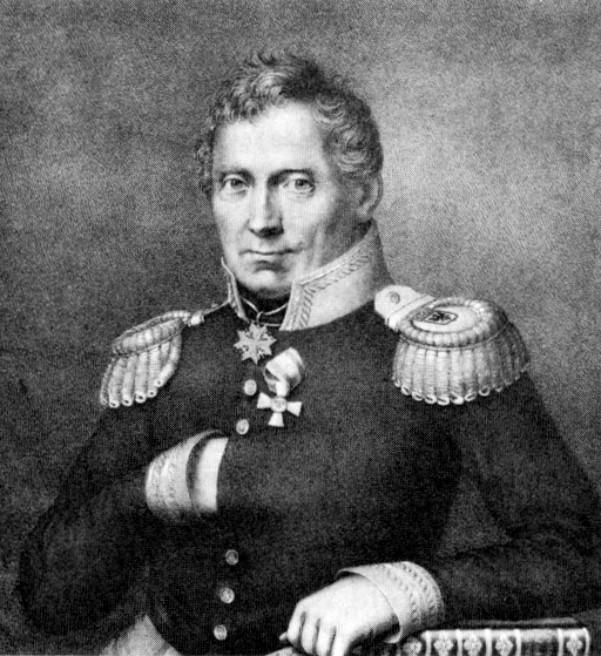
Georg Heinrich Rudolf Johann von Reisswitz, the "Father" of Tabletop Wargaming.
But the tides of history are always turning. A pivotal moment for tabletop wargaming came when Reisswitz’s son, Georg Heinrich Rudolf Johann von Reisswitz, or Reisswitz Jr. took up his father’s work and pushed the game for a wider audience. He released a second edition of the game of Kriegsspiel in 1824, a polished version of his father’s game which included a highly detailed resolution of the map, an abandonment of 3D terrain in place of flat maps with the latest cartography, the addition of umpires or a referee of sorts and finally, dice.
The umpire was instituted incase of a rules dispute or to pass encrypted messages from one player to another, as interpreting messages was a real issue of warfare. Dice simulated the randomness of the battlefield and how anything could happen and one must adapt.
Reisswitz Jr. presented his second edition of the game to the Prussian army high command, where they found it to be no ordinary game but an actual preparation for war. They thus recommended that it would be shared with the wider military for training purposes.
The issue then came to mass production. Reisswitz Jr. set up a workshop with carpenters, painters, cartographers, and collaborated with them on how they could spread Kriegsspiel to wider audiences. Soon, they would have a final product that would contain everything that was presented to the upper echelons of Prussian society, only now it was in miniature size.
In the late 1800s, the game was widespread to both military and civilian use and can even be played to this day. For this Reisswitz Jr. is considered to be the father of tabletop wargaming.
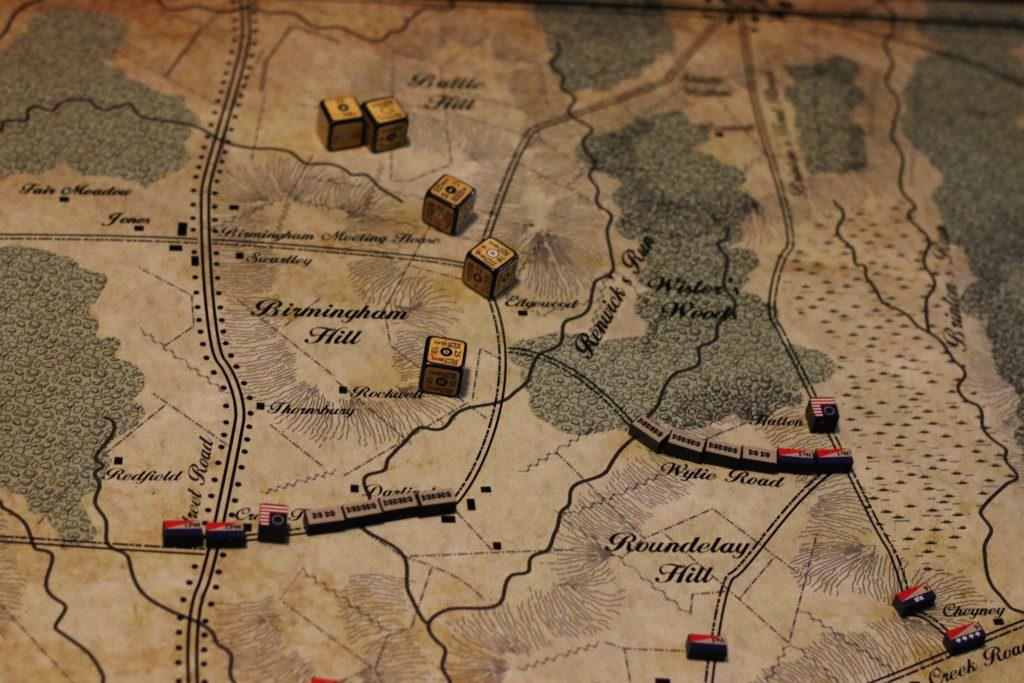
An Example of Kriegsspiel being played.
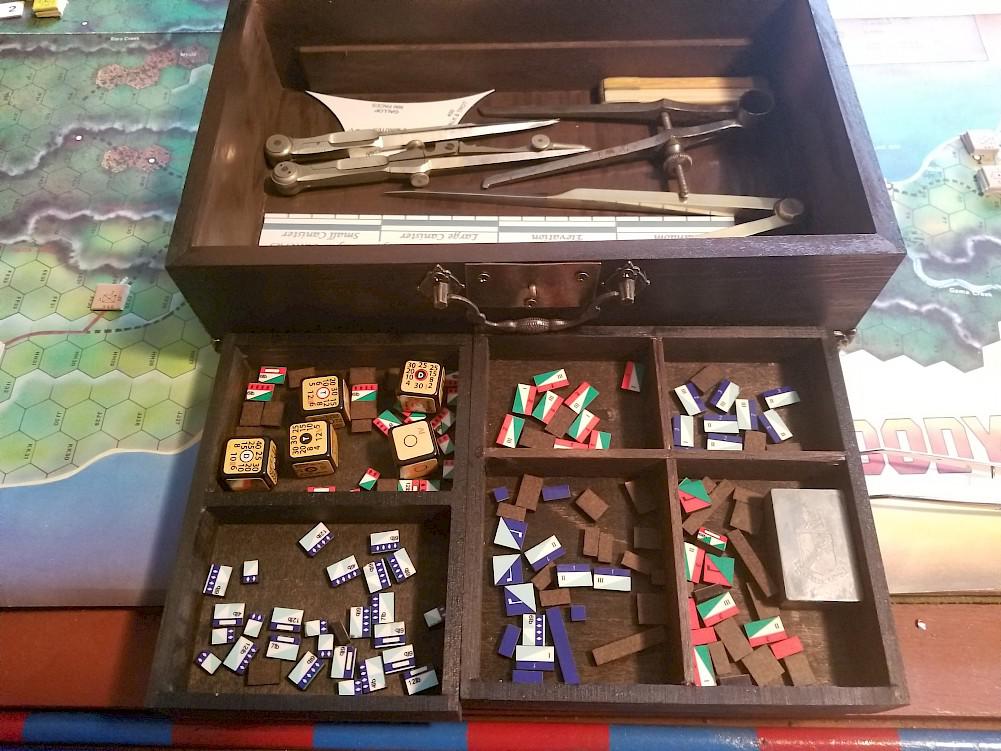
Kriegsspiel ready to be mass-produced to the army.
Now dear readers, we come to another key moment and perhaps one of the most important of them all. The moment where wargaming became available for anyone and everyone. In 1913 the famous author of novels such as War of the Worlds and The Invisible Man, H.G. Wells, created the first mass-market, mass-produced miniature war game rule book entitled Little Wars.
The book contained 111 pages of rules set for land-based battles with miniatures designed for ages 12+ to participate. The rules were very basic and easy to understand for the time and included many specific gameplay mechanics and tropes that can still be found in our favourite war games today.
For example, infantry could move one foot while cavalry could move two feet. To keep each play through different each time, Wells created multiple mission types with specific objectives in mind for victory conditions. Starting to sound familiar?
It also contained the all too familiar true line of sight mechanic where players had to crouch down on their hands and knees to see if they had viable targets to shoot at. There was one notable difference, however, between Wells’ rules set and what we have come to know as modern rules.
In Little Wars you actually had little cannons that you fired projectiles at enemy models. I don’t think that’s something that would translate well now but the idea of a Baneblade firing Nerf does put a smile on my face.
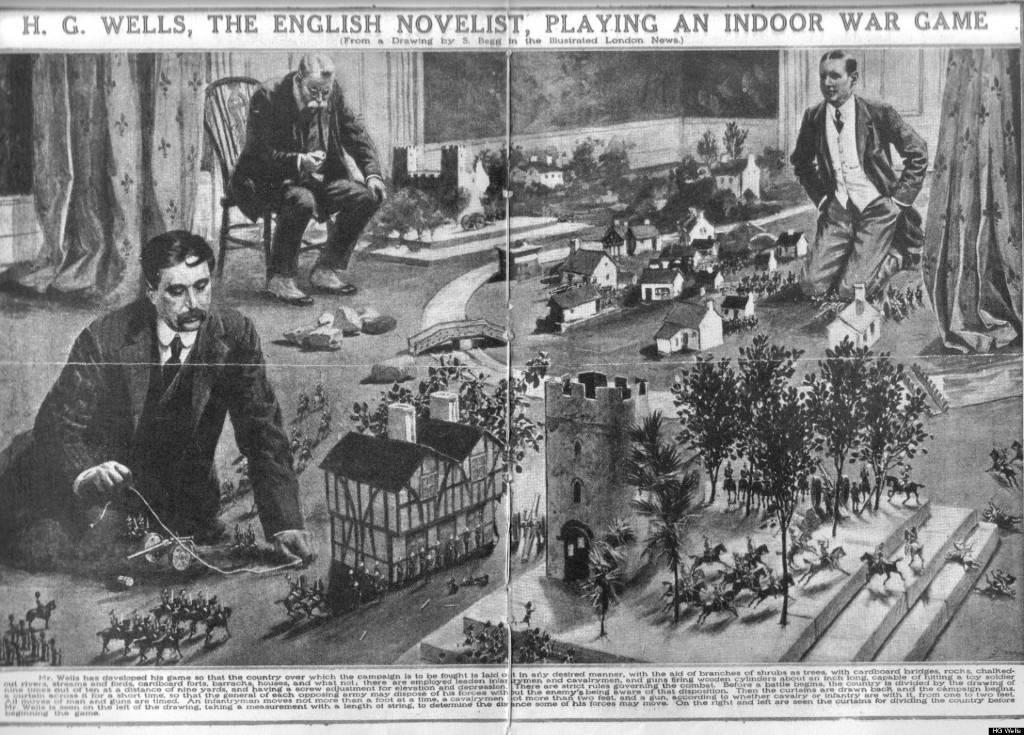
H.G. Wells playing Little Wars
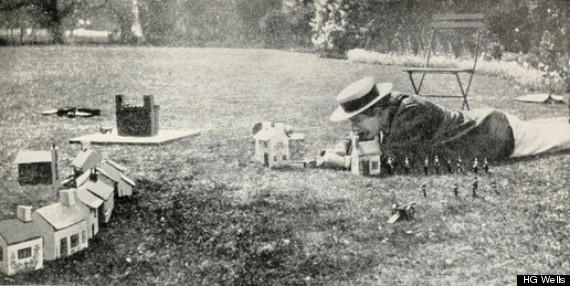
I wonder if he made pew pew noises too?
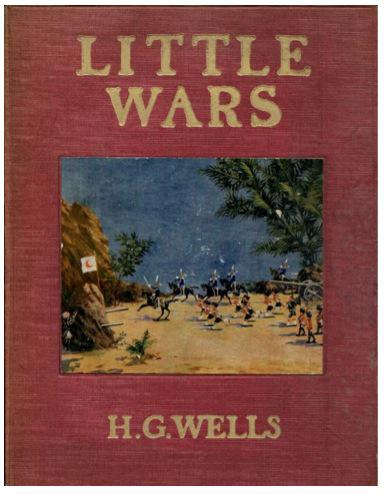
The first edition of Little Wars.
We have been on quite the expedition through history haven’t we dear readers? We have traversed over 1500 years to see how exactly the beloved games that we love so much come to be. Games of strategy such as chess and checkers date back several centuries, however, the idea of simulating modern combat is much more recent.
The introduction of Kriegsspiel revolutionized how wargaming was played as it had map movement, rules of fog of war and limited communication. It did not take long for war colleges to adopt this game as a training and simulation tool but it wasn’t until mass-market production of Little Wars that created the division between war games as a training tool and war games as recreation and fun for civilians.
This ushered in an explosion of companies that saw the potential to make not only a profit but also a war game that can be enjoyed by all. I hope that you have enjoyed this peek into the history of tabletop wargaming as it is always fascinating to discover the origins of the things that we hold dear. Speaking of history, I have provided some links down below to some of MiniWargaming’s greatest campaigns throughout its history.
If you are not a Vault member, you can still click here to get a free 7-day trial. Vault members are what drive MiniWargaming, so consider joining to support us in making even more miniature wargaming content for you. Till next time dear reader, Happy Wargaming!
- MWG Vito

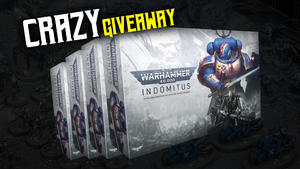 Indomitus Giveaway
Indomitus Giveaway
 Now Hiring - 3D Printing Technician
Now Hiring - 3D Printing Technician
 Hexton Hills Painting Competition Winners
Hexton Hills Painting Competition Winners
 Matthew's 3D Printing Recommendations for Terrain and Miniatures
Matthew's 3D Printing Recommendations for Terrain and Miniatures
 Dark Angels & Necrons Armies (Elite Edition) Giveaway
Dark Angels & Necrons Armies (Elite Edition) Giveaway
 2600 pt Astra Militarum Army Giveaway
2600 pt Astra Militarum Army Giveaway








